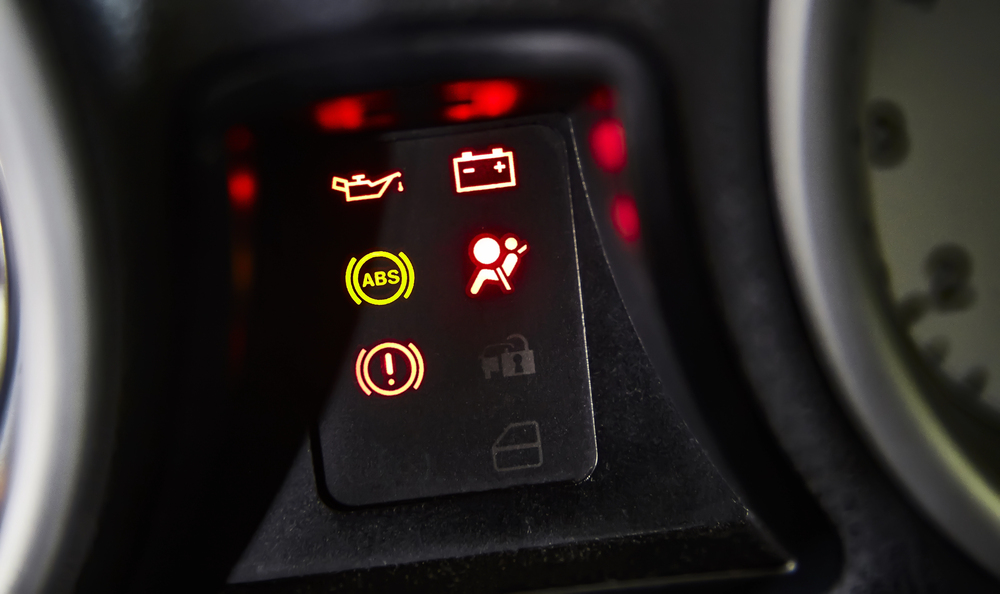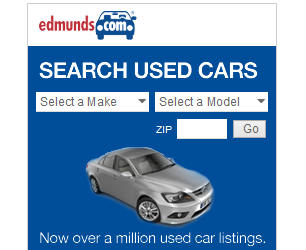Most Common Car Warning Lights and Their Meanings
Valerie Raskovic

Your car's gauge cluster is more than just a display of speed and fuel levels; it's a critical communication tool that alerts you to potential issues and informs you of maintenance cycles and needs. Understanding the meaning and importance of the various warning icons can help you stay safe and avoid costly repairs. We have compiled a detailed guide to some of the most common warning icons you might encounter in your car's gauge cluster.
The first thing to keep in mind is the fact that each warning icon can represent one or multiple different error codes that could be read by an OBD2 scanner. The level of information retrieved from one of these tools may vary greatly. A professional OBD2 scanner can cost thousands of dollars and is primarily used by vehicle technicians.
1. ![]() Check Engine Light (CEL)
Check Engine Light (CEL)
Icon: Car manufacturers may add some small variations; however, most modern vehicles will display a small engine outline. In some makes and models the check engine light could be accompanied by an exclamation point or a lightning bolt outline.
Meaning: This light indicates that the engine control module (ECM) has detected a problem with the engine or its emission control systems. It can range from a loose gas cap to serious issues like a misfire or a malfunctioning sensor. The check engine light could also display as a secondary code triggered by another electrical system computer or a communication error with the modern car's CAN bus system.
The CAN bus system is a communication protocol initially used on airplanes and military applications, allowing multiple system computers/ECUs to communicate with each other. In the early 90s many manufacturers started integrating CAN bus systems into cars, thus most modern vehicles are equipped with these systems. This means a generic check engine fault code may appear, as the car may be getting faulty data or error messages from another system and vice versa. An example of this is an ABS system warning light that often appears on late model Subarus due to an unrelated check engine code, such as the popular P0420, a common oxygen sensor code. The CAN bus system relies on data shared amongst multiple systems to ensure all the systems are operating within proper parameters. This is why it is so important to have the vehicle inspected by a professional technician, as without prior knowledge, training and experience, some due-it-yourself owners are left chasing warning codes that have nothing to do with the actual cause.
A check engine may act as a generic code or can be a code representing a problem within the drivetrain or emission systems. Ignoring any warning code is not a good idea and can lead to further damage, reduced fuel efficiency and increased emissions. It’s important to have the vehicle diagnosed by a professional as soon as possible to, at the very least, identify and understand the severity of the issue the warning icon represents and make arrangements to address the underlying issue.
2. ![]() Oil Pressure Warning Light
Oil Pressure Warning Light
Icon: Typically, the oil pressure warning light is represented by what appears to be a dripping tea kettle.
Meaning: : This is a very serious light; unlike the check engine light, there is no ambiguity about what it represents. This light indicates low oil pressure, which can cause catastrophic damage to the engine due to oil starvation. In some cars the oil pressure warning may be accompanied with a message prompting the user to shut off the car to avoid engine damage. The root of the cause may come from low oil levels in the engine, a failing oil pump, poor oil circulation due to some sort of blockage within the engine or any of the engine oil passageways.
If you continue to run the engine after seeing this oil pressure light, the likely result is complete engine failure, such as seizure, overheating and other low oil pressure-related engine damage. If this light comes on, DO NOT continue driving or idling your car, pull over safely and turn off the engine immediately. Check the oil level and consult a mechanic.
3. ![]() Coolant Temperature Warning Light
Coolant Temperature Warning Light
Icon: The most common coolant temperature warning light appears in the form of a thermometer in a wavy line or a car with steam rising from the hood.
Meaning: This is another serious light that should never be ignored, as the light indicates that the engine is actively overheating. This warning icon will appear when the engine goes above its normal operating temperature and can be caused by low coolant levels, a malfunctioning thermostat, a cooling system leak or a failed engine head gasket.
Operating and running the engine above its normal operating temperature can lead to engine damage, including warped cylinder heads, damaging the head gasket, and critical internal damage. If this light comes on, pull over safely and allow the engine to cool. Once the car has cooled down to ambient temperature, carefully check the coolant level and consult a mechanic.
4. ![]() Brake System Warning Light
Brake System Warning Light
Icon: A brake system warning light is typically represented by a brake pad and rotor icon or an exclamation point in parentheses.
Meaning: This light may represent various flaws or defects within the braking system. The most common causes can be traced to low brake fluid, brake fluid leaks, worn brake pads, malfunctioning brake sensors or speed sensors, as well as a burned-out light bulb within any one of the rear brake lights.
A functional braking system is crucial for safety. If this light comes on, check the brake fluid level as well as all of the brake lights for any burned-out brake indicator lights and have the braking system inspected by a professional technician.
5. ![]() Battery Warning Light
Battery Warning Light
Icon: A battery warning icon is generally very easy to recognize, as in many vehicles it is displayed as an actual battery outline with a plus and minus sign or a battery with a lightning bolt.
Meaning: This light indicates a problem with the battery, battery terminals or the actual charging system, such as a failing alternator or a loose battery connection.
Ignoring a battery warning light can lead to a dead battery and leave you stranded in the middle of the road. In most cases the car will continue to operate until such time as it loses all electrical charge to power the engine ignition and other critical systems. If you cannot stop immediately after seeing this light appear, turn off all non-essential electrical systems and find a safe place to pull over and have the vehicle towed to your trusted, professional mechanic shop.
6. ![]() Tire Pressure Monitoring System (TPMS) Warning Light
Tire Pressure Monitoring System (TPMS) Warning Light
Icon: The TPMS warning sign is usually represented by an outline of a car tire with an exclamation point.
Meaning: This light indicates that one or more tires are underinflated. You will need to pull over to check the tire pressure of all 4 tires to make sure it is within the manufacturer’s recommended spec. In some cases, the warning light may come on intermittently, representing a slow leak. It may also come during rapid temperature drops as the air inside the tire will expand and contract based on air temperature. In cases where no leak can be spotted, a simple top-off may address the issue. Do not overinflate your tires; always keep your tire pressures within the recommended levels.
7. ![]() Airbag Warning Light
Airbag Warning Light
Icon: An airbag light will typically appear with an illumination of a person with a seatbelt and an airbag.
Meaning: This light indicates a problem with the airbag system, such as a malfunctioning sensor or a deployed airbag that needs to be replaced or reset. Airbags are a critical part of your vehicle’s safety system. If this light comes on for no obvious reason, have the airbag system inspected and repaired by a professional to ensure it will deploy properly in the event of a crash. Please note the airbag light will illuminate every time the airbag is deployed due to a collision. The vehicle’s airbags will need to be replaced, and modules changed or rebuilt in order for the airbag system to function properly after an accident event with airbag deployment.
8. ![]() Low Fuel Warning Light
Low Fuel Warning Light
Icon: A low fuel warning icon usually appears in the shape of a fuel pump with a line or an exclamation point.
Meaning: This light indicates that the fuel level is low, and the vehicle is running on reserve. The amount of reserve fuel will vary per car, but most modern cars will give you at least 25 miles of mixed highway and city driving without prolonged idling before the engine is starved of fuel. Depending on the year, make and model, you will have some time to find a fuel station and fill up your gas tank.
An important thing to remember is that most modern vehicles use the fuel in the tank fuel pump assembly for cooling the fuel pump. Starving the fuel system of fuel can lead to the fuel pump overheating and failing. It can also cause the fuel system to suck up air into the lines, causing additional issues within the delicate modern very high-pressure fuel injection systems. All these issues can lead to costly repairs. The proper thing to do when the light comes on is to find the nearest gas station and fill up.
9. ![]() ABS (Anti-Lock Braking System) Warning Light
ABS (Anti-Lock Braking System) Warning Light
Icon: In a lot of modern cars, the ABS light can be easily identified, as it will display "ABS" in a circular outline. It may also appear as a car outline with diagonal lines or an exclamation point in parentheses.
Meaning: This light indicates a problem with the ABS system, which helps prevent the wheels from locking up during hard braking. As mentioned above, the problem may not always be within the ABS system itself, as in many modern vehicles the ABS light may come on as a secondary light related to CAN bus system communication or unreliable data from the vehicle’s other electrical modules/computers.
The purpose of the ABS system is to enhance control and safety during emergency stopping by modulating brake pressure, preventing any of the wheels from locking up. If this light comes on, have the system inspected by a professional to ensure it is functioning properly.
10. ![]() Traction Control System (TCS) Warning Light
Traction Control System (TCS) Warning Light
Icon: The traction control system icon often appears in the shape of a car with a curvy line or an exclamation point in parentheses.
Meaning: This light indicates that the traction control system has detected that one or more of the wheels have experienced loss of tracking. The light may also come on due to an issue within the TCS system.
The traction control system light is often accompanied by other warning icons, as it depends on data from various car systems. In some vehicles the TCS light may come on due to any ABS and brake system faults, such as faulty speed sensor data, as well as a slew of various check engine related codes that can all trigger this light to come on. This system may not be as critical as some of the other ones listed above, but it is part of your vehicle’s safety technology, and it helps maintain traction on slippery surfaces. If this light comes on, it may indicate a malfunction that could affect the vehicle’s stability. Have the system inspected by a professional.
Understanding the meaning and importance of the warning icons in your car's gauge cluster is crucial for maintaining your vehicle's performance and ensuring your safety on the road. By staying vigilant and addressing issues promptly, you can avoid costly repairs and keep your car running smoothly. Always refer to your vehicle's owner's manual for specific information and consult a professional mechanic if you are unsure about any warning light.
Read more articles

